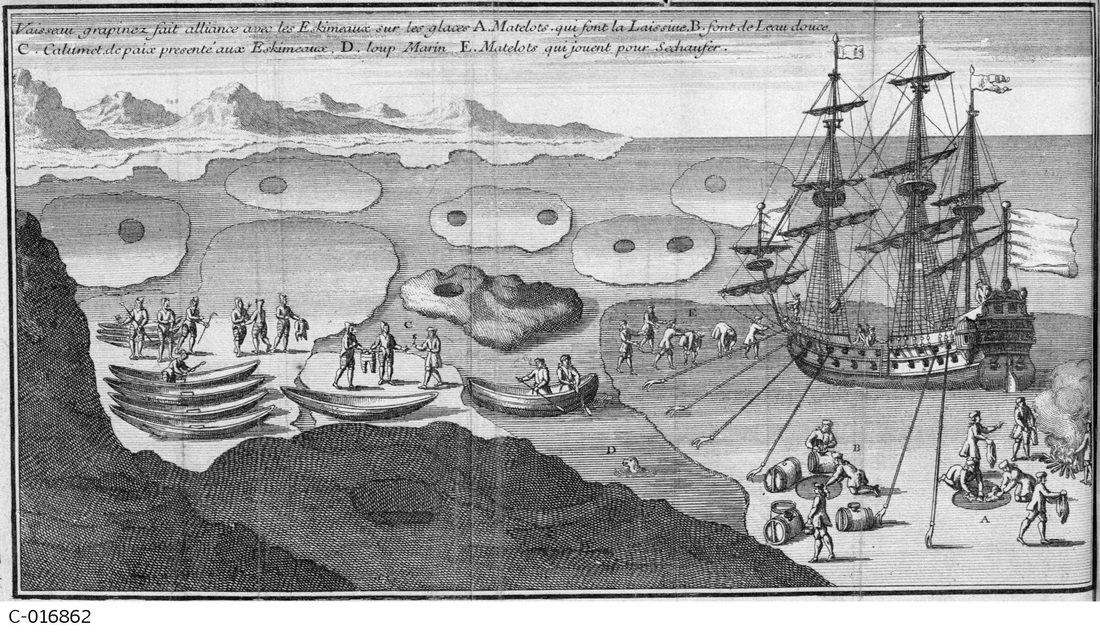Enlargements of Maps and Engravings found in Check Mate!
To the Check Mate! book reader - The following maps and/or engravings only appear in the book at a maximum width size of 4.25" . Therefore, click on the Page No. to see an enlargement of the illustration for that specific book page. Use your keyboard enlargement functions to zoom in and zoom out of each image. The text beside each page number is the caption that accompanies the image on the book page.
P.19 Thames River map 1697
P.20 A View of Gravesend c 1690. Source: Alex J. Philip, 1954
P.26 La Rochelle & Perigny map 1697
P.28 Port and town of LaRochelle in the 17th century.
P.41 The Buoy of Nore…acted as a warning to sailors to remain in the channel in order to avoid grounding on the sandbars
P.44 The route taken by the English convoy from London to Hudson Bay
P.45 The passage of the French squadron from La Rochelle to Baie D’Hudson
P.59 When the depth of the sea was found to be 15 fathoms, we knew we had reached the Grand Banks.
P.61 Pierre Le Moyne d’Iberville…was every bit the heroic figure I had always imagined him to be.
NOTE: P.61 Painted Portrait of Pierre Le Moyne d'Iberville not used in the book.
P.79 After proceeding up the coast of Labrador, our ships entered Hudson Strait where we encountered dangerous ice floes.
P.86 Map of Hudson Strait
P.87 Captain Smithsend traded knives to the native peoples for a bundle of Arctic fox furs.
P.91 Le Profond grapped to the ice
P.95 Moved by a favourable wind, Le Profond slipped out into clearer waters.
P.97 York Factory/Fort Bourbon and its surroundings
P.101 Le Pelican cut in and sailed straight for the Hampshire.
P.110 Our ship, the Hudson’s Bay, surrendered, and we saw the Dering take flight to the nort west
P.117 York Factory and its surroundings.
P.119 We learned only later that Le Pelican had grounded…on the mud flats near the mouth of the Nelson River.
P.120 When the French survivors fell ashore, they were totally exhausted.
P.120-1 Survivors of Le Pélican warmed and dried themselves by a blazing fire on the beach.
P.122 York Factory under attack by the French
P.125 Members of the reconnaissance party tramped in with their muskets and haversacks
P.126 We learned of the tragic fate of Le Pélican wrecked on shoals at the mouth of the River Nelson,
P.129 Captain Iberville gave the command to commence a heavy barrage of cannon shot and musketry.
P.131 To the shrill sound of fifes and…drums beating a retreat, Governor Bailey…led his garrison out through the gates.
(Source: Hudson Bay Archives, Winnipeg, Manitoba -- Used with permission)
P.154 [David said]… “You’ve been a good buddy to me…Presque comme un frère.”
NOTE: Library & Archives Canada Images -- Used with permission
P.19 Thames River map 1697
P.20 A View of Gravesend c 1690. Source: Alex J. Philip, 1954
P.26 La Rochelle & Perigny map 1697
P.28 Port and town of LaRochelle in the 17th century.
P.41 The Buoy of Nore…acted as a warning to sailors to remain in the channel in order to avoid grounding on the sandbars
P.44 The route taken by the English convoy from London to Hudson Bay
P.45 The passage of the French squadron from La Rochelle to Baie D’Hudson
P.59 When the depth of the sea was found to be 15 fathoms, we knew we had reached the Grand Banks.
P.61 Pierre Le Moyne d’Iberville…was every bit the heroic figure I had always imagined him to be.
NOTE: P.61 Painted Portrait of Pierre Le Moyne d'Iberville not used in the book.
P.79 After proceeding up the coast of Labrador, our ships entered Hudson Strait where we encountered dangerous ice floes.
P.86 Map of Hudson Strait
P.87 Captain Smithsend traded knives to the native peoples for a bundle of Arctic fox furs.
P.91 Le Profond grapped to the ice
P.95 Moved by a favourable wind, Le Profond slipped out into clearer waters.
P.97 York Factory/Fort Bourbon and its surroundings
P.101 Le Pelican cut in and sailed straight for the Hampshire.
P.110 Our ship, the Hudson’s Bay, surrendered, and we saw the Dering take flight to the nort west
P.117 York Factory and its surroundings.
P.119 We learned only later that Le Pelican had grounded…on the mud flats near the mouth of the Nelson River.
P.120 When the French survivors fell ashore, they were totally exhausted.
P.120-1 Survivors of Le Pélican warmed and dried themselves by a blazing fire on the beach.
P.122 York Factory under attack by the French
P.125 Members of the reconnaissance party tramped in with their muskets and haversacks
P.126 We learned of the tragic fate of Le Pélican wrecked on shoals at the mouth of the River Nelson,
P.129 Captain Iberville gave the command to commence a heavy barrage of cannon shot and musketry.
P.131 To the shrill sound of fifes and…drums beating a retreat, Governor Bailey…led his garrison out through the gates.
(Source: Hudson Bay Archives, Winnipeg, Manitoba -- Used with permission)
P.154 [David said]… “You’ve been a good buddy to me…Presque comme un frère.”
NOTE: Library & Archives Canada Images -- Used with permission


